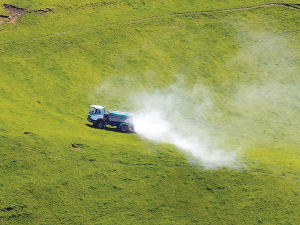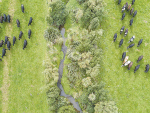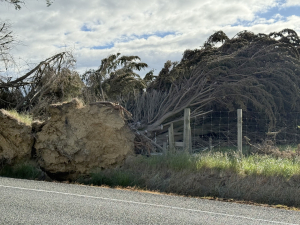Bert Quin, managing director of Quin Environmentals (NZ) Ltd and owner of the fertiliser company Quinfert on why we need to be more thoughtful about fertiliser.
Dairy farmers are increasingly pressured by combinations of low rainfall, disappointing payouts, bank lending determined by cashflow, and increasing environmental rules and restrictions.
So why talk about potassium (potash) in this context? Because a key fertiliser cost difference for dairy versus sheep and beef farming has been the amount of potash dairy farmers are told they need to apply.
A typical recommendation is 80 - 100kg K/ha (160 - 200 kg/ha) annually split into two applications (applied with superphosphate). This would typically keep potassium levels in grass and clover higher than 3.5%.
Farmers are recommended these quantities because clover needs it and grass responds to it, despite the complications this causes with milk fever. They are told they should have potash ‘Quicktest’ soil K levels of 8 - 10. But should pasture and soil levels be this high or is the problem somewhere else?
I have reviewed the results of many field trials of potassium done during the last 60 years. The vast majority compared applying zero K with applying large single doses. I found no trial in which small amounts of K were applied frequently.
Everyone, it seems, missed the following vital point: just because pasture K level goes from a deficient 1.5 - 2% K level to 3.5 - 4% — and much better production with a 50kg K/ha application — this does not mean this amount was necessary to get the full response.
No trial data I looked at showed a pasture response to K when the level in the pasture was above 2.3 - 2.5%, and this can easily be maintained with Quicktest K levels of 5 - 6, not 8 - 10. But here is a proviso: the potash needs to be applied in small, regular intervals — about 10kg K every two months, but skipping late autumn and winter so, say, four applications per year.
The current practice of two applications a year has come about largely to suit the spreading industry. Farmers have long been encouraged to cut spreading costs by reducing frequency. This wasteful practice is encouraged by most of the fertiliser industry because it enables the companies to sell more potash.
Unfortunately, K is like N. When you apply a lot of K in one application, pasture — particularly clover — takes up much more than it needs for growth, and vastly more than the 1.0 - 1.2% K a cow needs in its diet. This leads to well known metabolic problems. Farmers try to avoid these problems by not applying K too late in autumn, but metabolic problems can occur regardless if soil tests are in the industry’s ‘recommended’ range of 8 - 10 and above.
Much of the excess K taken up by pasture is excreted in urine patches. Much of this can be leached depending on the time of year, rainfall and/or irrigation and the type of clays in the soil (not just the CEC, but also how their K sorption and desorption behaviour is affected by drying and wetting cycles). This may not happen as predictably as excess nitrate does from the N in urine, but it is a big loss factor nevertheless. And leaching of K (a cation takes with it nitrate and sulphate anions. The reverse is also true, of course.
So what would I do if I were a dairy farmer? I would apply the potash myself, at 10kg K/ha four times per year from a tractor-mounted spreader, so saving myself about 40kg K/ha (about $70/ha delivered) and lots more in lower vet bills, plus the environmental advantage of reduced nitrate leaching.
The need for extra labour and time for spreading can be avoided by adding the K to planned N applications. And I would definitely use urease-inhibitor-treated prilled urea — not granular — to hugely reduce the quantity of N needing to be applied.
I think ‘precision farming’ is an over-hyped and vague expression, but we certainly need to be more thoughtful about fertiliser — the form in which the nutrients are used and how we apply them.
• Bert Quin is managing director of Quin Environmentals (NZ) Ltd, owner of the fertiliser company Quinfert











